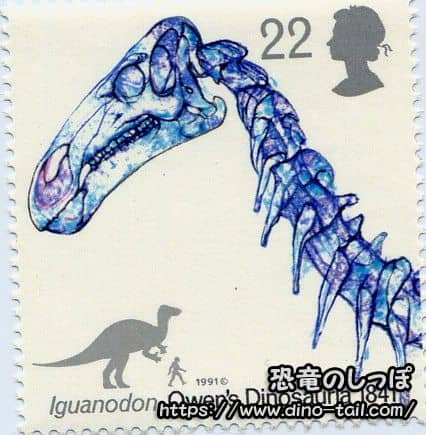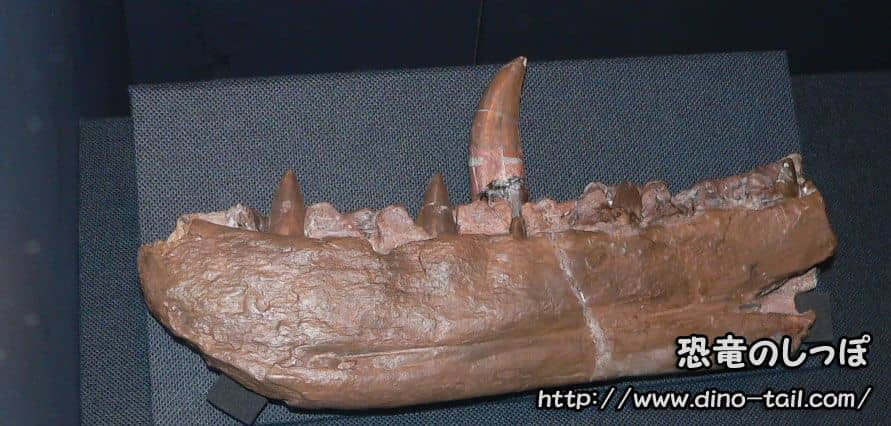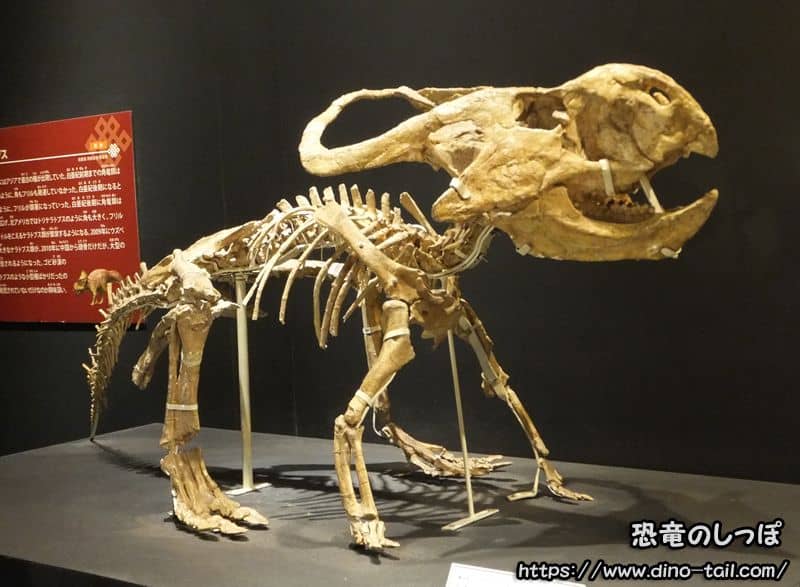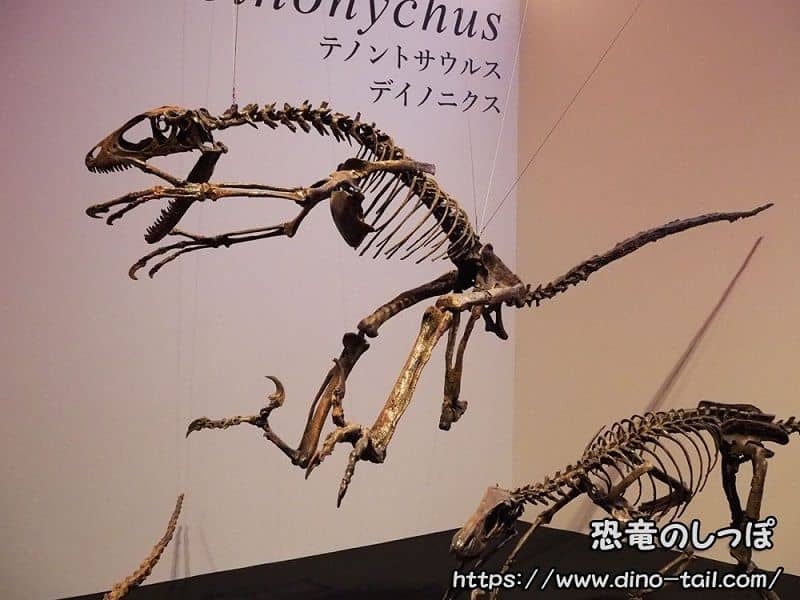Long ago, for centuries, "mysterious giant bones and fossils unlike any living creature" were found all over the world. For example, in ancient Greece, Rome, and China, some scholars believed these bones and fossils were the remains of mythological heroes and monsters.
It was in the 1820s that these fossils began to be scientifically recognized, with England as the stage.
The Discovery of Iguanodon, Megalosaurus, and Dinosaurs (1820-1850)

Around 1811, the talk of England was the ichthyosaur found in Dorset and the famous fossil collector Mary Anning. Inspired by this, Gideon Algernon Mantell, a country doctor in Sussex, became interested in fossils and paleontology. He collected fossils found in the limestone-covered Wealden region. Although the Cretaceous fossils known in England at that time were marine, his collection included some that indicated land. Around 1822, he noticed "unidentifiable tooth fossils (fossils that could not be identified with any known creature)" among his collection. He requested鑑定 from several scientists, but received only definitive answers like "it's from a fish or mammal" or "it's not from the Cretaceous period" (even Richard Owen, who would later become the head of the British Museum's Natural History Department and coin the term "Dinosauria," identified the tooth as mammalian). Gideon Mantell was not convinced and continued his own observations and research. It took time to convince other scientists, but in 1825, he named and described it as "Iguanodon," meaning "iguana tooth," because it resembled the tooth of an iguana. The tooth was about 20 times the size of an iguana's, leading him to estimate Iguanodon's total length at 18 meters (later discoveries and research have shown that the actual Iguanodon was 7-9 meters long).

A year before Iguanodon was described, in 1824, the English geologist William Buckland had described Megalosaurus, meaning "great lizard," in a paper. In 1797, a physician named Sir Christopher Pegge discovered a carnivorous lower jaw fossil in the same Stonesfield limestone quarry. The fossil was acquired by William Buckland, a professor of geology at Oxford University and dean of Christ Church, via the collection of the Christ Church Anatomy School. With the help of a French comparative anatomist, it was determined that the jaw fossil belonged to an extinct giant lizard-like creature. William Buckland proposed "Megalosaurus" at the Geological Society of London in 1824.
Sir Richard Owen, an English comparative anatomist and biologist (then a professor at the Royal College of Surgeons), became interested in the large reptiles that lived in the Mesozoic Era (Megalosaurus described by William Buckland in 1824, Iguanodon described by Gideon Mantell in 1825, and Hylaeosaurus reported by Mantell in 1832). At a meeting of the British Association for the Advancement of Science in 1841, Richard Owen argued that these three species of giant reptiles discovered in southern England possessed features not found in other reptiles. The following year, in 1842, Richard Owen proposed calling these three species of giant terrestrial reptiles that lived in the Mesozoic Era "Dinosauria" . Dinosauria means "terrible (or wonderful) lizards" in Latin. At the time, Richard Owen seems to have thought that the three species he called dinosaurs were reptiles with thick skins like elephants and hippos.
Subsequently, many dinosaurs were discovered in Europe, including Compsognathus (1859, Germany), Archaeopteryx (1861, Germany), and Iguanodon (1878, Belgium). With the discovery and research of new fossils and dinosaurs, more and more scholars began to question Owen's idea of "thick-skinned" creatures.
Discovery of Footprint Fossils by Edward Hitchcock (1835-1864)
In 1835 (seven years before the taxonomic name "dinosaur" was proposed), geologist Edward Hitchcock found strange footprint fossils in the Connecticut Valley of New England (Late Triassic strata). He thought these three-toed fossils were "the footprints of an ancient bird." From the size of the footprints, he envisioned a giant bird, estimated to be about 3.8 - 4.5 meters tall, running on the sand. From then on, he devoted himself to the discovery and study of footprint fossils. Edward Hitchcock found over 20,000 footprint fossils before his death in 1864.
The footprints that Edward Hitchcock believed throughout his life to be from birds are now known to have been made by dinosaurs.
The Bone Wars in North America - Cope and Marsh (1870-1897)
Two American paleontologists who were active at the end of the 19th century, Edward Drinker Cope of the Academy of Natural Sciences of Philadelphia and Othniel Charles Marsh, director of the Peabody Museum of Natural History at Yale University, played important roles in the history of dinosaur excavation.
When they met in 1864, they were friends, but over time their friendship soured. Cope was said to be short-tempered and quarrelsome, while Marsh was slow, meticulous, and introverted.
From 1877 to 1892, they hired fossil hunters and conducted large-scale excavations and surveys in Colorado, Wyoming, and Alberta, Canada. They saw each other as rivals, sometimes sending spies to sabotage each other's work (for example, using dynamite to destroy the other's excavation site) and repeatedly attacking each other personally, while excavating and describing many dinosaur fossils. Cope discovered and described a total of 56 species, and Marsh a total of 80 species, for a combined total of 136 new dinosaur species. (*Later research revealed that some of the dinosaurs they described were duplicates or were insufficient for description as new species and became invalid names. Of the 136 species, 32 are currently considered valid.)
In the end, both were overwhelmed by excavation costs and went bankrupt. Their later years were reportedly not "full of happiness."
However, the many specimens and papers they left behind are invaluable to subsequent paleontological research, and their contributions are immeasurable.
While their contributions were great, they also left a negative mark on American paleontology. The facts that they "rushed to describe new species with open hostility, neglecting sufficient verification" and that "valuable fossils were destroyed due to their mutual sabotage" became known to the public, and for decades afterward, American paleontology was reportedly looked down upon by Europe and was in a difficult position.
Major Dinosaurs Described by Cope and Marsh
| Genus Name | |
|---|---|
| Described by Cope | Camarasaurus, Coelophysis |
| Described by Marsh | Diplodocus, Allosaurus, Stegosaurus, Triceratops |
First Dinosaur Fossil Discovery in Asia - The Andrews Expeditions (1922-1930)
In the spring of 1922, an expedition led by Roy Chapman Andrews (a total of 26 members) visited Central Asia. He was a staff member of the scientific department of the American Museum of Natural History. The purpose of the expedition was to find "traces of the origin of mankind." At that time, it was believed that the origin of humans and mammals was in Central Asia, and Central Asia was called the "cradle of mankind." To prove the "cradle of mankind" theory, the Andrews expedition left Hebei Province, China on April 17, 1922, and headed for the Gobi Desert in Mongolia. Some organizations have designated April 17 as "Dinosaur Day."

In September 1922, on their way back from the Gobi Desert to Beijing, China, the expedition discovered a well-preserved skull fossil. At first, it was thought to be from a mammal, but the following year, in 1923, it was described as the ceratopsian "Protoceratops andrewsi." The specific name "andrewsi" is derived from Roy Chapman Andrews.
Following 1922, they carried out a total of five expeditions and surveys in Mongolia in 1923, 1925, 1926, and 1930. In these five expeditions, they discovered 51 new species of ancient creatures, including Psittacosaurus, Oviraptor, Bactrosaurus, Alectrosaurus, and Pinacosaurus (the number of fossil specimens of ancient creatures reached 26,000). A particularly interesting discovery was the "large number of Protoceratops egg fossils" found during the 1923 expedition. They were preserved in a nesting state.
Although a sixth expedition was planned for 1931 and beyond, the political situation in China and Mongolia became unstable, so in August 1932, Andrews closed the Central Asia office and returned to the United States. (Political incidents in the same region involving Japan include the Manchurian Incident (1931) and the Second Sino-Japanese War (1937).)
Stagnation Period of Dinosaur Research (1940s-1950s)
From about 1940 to 1960, dinosaur research entered a long period of stagnation, becoming quite obscure. Although the Soviet Union (now Russia) sent a research team for dinosaurs to Mongolia in the 1940s, many countries and groups regarded dinosaurs as "unworthy of attention, having gone extinct in the process of evolution (an evolutionary failure)." In the biological and geological societies of the time, more people and money were allocated to research on mice and horses, which were considered superior to dinosaurs.
The Dinosaur Renaissance and John Ostrom (Late 1960s)

In the late 1960s, some paleontologists revitalized dinosaur research. They began to challenge the conventional image of "slow-moving dinosaurs" and assert the view that "dinosaurs were active animals with social behaviors."
The catalyst was the discovery of Deinonychus in Montana, USA, in 1964. The discovery of this small, bird-like dinosaur would significantly change the image of dinosaurs. John Ostrom of the Peabody Museum of Natural History at Yale University examined the common features of Archaeopteryx and Deinonychus, showing that they were closely related evolutionarily. He proposed the "dinosaur origin of birds theory."
Ostrom predicted that "eventually, a dinosaur (theropod) more closely related to birds will be discovered in strata older than the Early Cretaceous (about 115 million years ago) when Deinonychus lived." Subsequent discoveries would prove Ostrom's prediction correct.
Ostrom's research and views were featured in magazines and on television, but it was his student, Robert Bakker, who widely presented these ideas to the public. Robert Bakker studied bone structure and researched everything from dinosaur growth rates and walking speeds to their body structures. As a result, he argued that their bodies were more similar to mammals and birds than to reptiles like lizards and crocodiles, and that dinosaurs were warm-blooded. Amid the strong image of "dinosaurs = reptiles = cold-blooded animals," he even suggested the possibility that they were homeothermic, like birds.
He argued that dinosaurs were not "evolutionary failures," as was the image held by the public during the stagnation period of dinosaur research (1940s-1950s), but were evolutionarily superior successors that led to birds.
The Golden Age of Dinosaur Discovery and Research (1990s to Present)
In the 1970s, inspired by the claims of Ostrom and Robert Bakker, many researchers began to pay attention to dinosaurs. Dinosaur research, which had been centered in Europe and North America, became active in various countries such as the Soviet Union (Russia), China, Argentina, and Australia. Today, dinosaur fossils have been discovered on every continent, including Antarctica.
With the discovery of the feathered dinosaur Sinosauropteryx in Liaoning Province, China, in 1996, John Ostrom's "dinosaur origin of birds theory" became the established theory, and many scholars are now studying the ecology and structure of dinosaurs to understand "how the characteristics of birds evolved."
In particular, recent research has developed at an accelerated pace, and with the development of X-ray CT scans and computers, methods of bone histology, and the discovery of soft tissues, it has become possible to estimate dinosaur skin color, sex, lifestyle, and physical abilities, which were previously difficult to know. With the development of various fields such as paleontology, modern biology, veterinary medicine, and earth sciences, as well as measurement technologies represented by computer technology, electron microscopes, and radiation testing, I believe that experts in these fields will continue to surprise us with many new findings about dinosaurs in the future.
